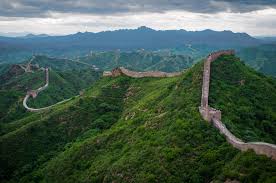
The Great Wall of China is an ancient series of walls and fortifications, totaling more than 13,000 miles in length, located in northern China. Perhaps the most recognizable symbol of China and its long and vivid history, the Great Wall was originally conceived by Emperor Qin Shi Huang in the third century B.C. as a means of preventing incursions from barbarian nomads. The best-known and best-preserved section of the Great Wall was built in the 14th through 17th centuries A.D., during the Ming dynasty. Though the Great Wall never effectively prevented invaders from entering China, it came to function as a powerful symbol of Chinese civilization’s enduring strength.
With the death of Qin Shi Huang and the fall of the Qin Dynasty, much of the Great Wall fell into disrepair. After the fall of the later Han Dynasty, a series of frontier tribes seized control in northern China. The most powerful of these was the Northern Wei Dynasty, which repaired and extended the existing wall to defend against attacks from other tribes.

The Bei Qi kingdom (550–577) built or repaired more than 900 miles of wall, and the short-lived but effective Sui Dynasty (581–618) repaired and extended the Great Wall of China a number of times.
With the fall of the Sui and the rise of the Tang Dynasty, the Great Wall lost its importance as a fortification, as China had defeated the Tujue tribe to the north and expanded past the original frontier protected by the wall.
During the Song Dynasty, the Chinese were forced to withdraw under threat from the Liao and Jin peoples to the north, who took over many areas on both sides of the Great Wall. The powerful Yuan (Mongol) Dynasty (1206-1368), established by Genghis Khan, eventually controlled all of China, parts of Asia and sections of Europe.
Though the Great Wall held little importance for the Mongols as a military fortification, soldiers were assigned to man the wall in order to protect merchants and caravans traveling along the lucrative Silk Road trade routes established during this period.




